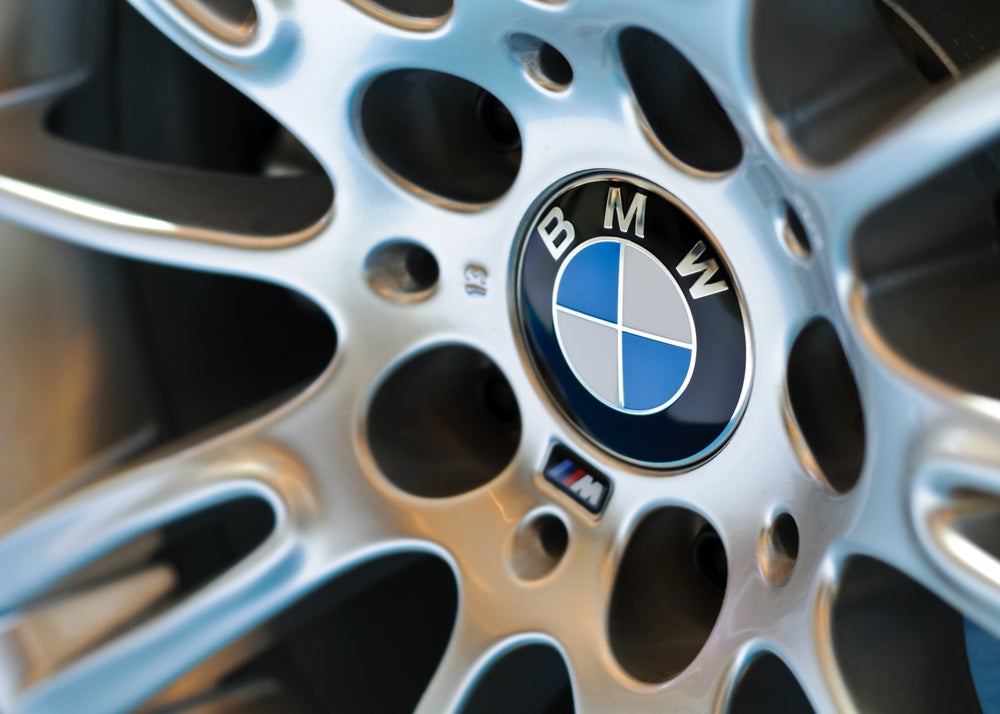From multi-million
dollar retail stores modelled on Apple’s iconic outlets to budget
transaction-oriented units, branch investment programmes have
become a regular feature of banks’ channel investments. But in
terms of scale and ambition, few projects match Franco-Belgian
lender Dexia’s. Douglas Blakey reports.

first glance, the November
2008 press release headlined: ‘Diebold reports Dexia contract’ was
fairly run of the mill.
It was anything but:
arguably, the deal behind the innocuous headline was one of the
most significant branch investment programmes of the past three
years.
Dexia was not just replacing
out of date ATMs; nor was it upgrading a small part of its branch
infrastructure or investing in a handful of flagship
stores.
How well do you really know your competitors?
Access the most comprehensive Company Profiles on the market, powered by GlobalData. Save hours of research. Gain competitive edge.

Thank you!
Your download email will arrive shortly
Not ready to buy yet? Download a free sample
We are confident about the unique quality of our Company Profiles. However, we want you to make the most beneficial decision for your business, so we offer a free sample that you can download by submitting the below form
By GlobalDataWhat Dexia had in mind was a
complete transformation of the majority of its network: a
re-engineering of its branch channel as opposed to a standard
modernisation.
Benoit Speybrouck, branch and
ATM infrastructure head at Dexia, told RBI: “Around this
time, branch staff spent too much time on low-level cash handling;
it accounted for around 10% of all branch activity.
“The Dexia branches offered
traditional features with safety glass. Security was an issue and
we even suffered high-profile staff kidnaps as criminals knew that
cash handling was the responsibility of the staff.”
Dexia’s ATM network – many of
the units were more than eight years old and approaching the end of
their useful life-cycle – was also becoming dated.
The ATMs were not EMV
compliant and with only two cassettes holding notes, offered a
limited cash handling capacity.
Another problem inherent with
the traditional branch model was the lack of time staff were
spending with customers – in summary, the legacy Dexia branches
could not be described as open or inviting.
With concerns over security
and recognising the need to replace its pool of ATMs, Dexia made
the radical decision to give its retail banking branch channel a
complete makeover.
It resolved to move all
standard transactions to the self-service channel.
Around the world, retail
banks of varying sizes have faced similar challenges in the past
decade, examples including:
- In Mexico, Banamex kicked
off an ambitious project with the aim of changing a proportion of
its 1,580-strong branch network from being transaction oriented to
a more customer-focused environment; - In South Africa, Capitec has
enjoyed phenomenal growth. Its no-frills, low-cost paperless branch
network now exceeds 400 outlets with another 50 new units planned
to open this year, and - In the UK, Barclays has
embarked on a major branch investment programme, while rival Lloyds
TSB is engaged in a seven year programme to overhaul its
network.
Meantime, a growing number of
major banks have dug deep and made major investments in high
profile, flagship stores, such as Citi in the US.
In Canada, Royal Bank of
Canada will accelerate growth of its Retail Stores concept
branches; in Paris, BNP Paribas has rolled out its concept store, 2
Opera, while Deutsche Bank has made similar investments in
Germany.
Almost inevitably, the name
of Apple has been mentioned by such banks as providing the
inspiration for a new generation of stores.
Dexia’s project was on a
quite different scale; it was not interested in a handful of
flagship store openings each year. Nor had Dexia the luxury of
time: it resolved to redesign the majority of its 800-branches
within four years of the programme – Open Branch – debuting in 2008
with the opening of its first pilot branch.
Dexia sought a technology
partner and sent out a request for proposal (RFP) to potential
self-service specialists, such as its existing ATM supplier
Diebold, NCR and Wincor Nixdorf.
 The project
The project
tender from Diebold prevailed, one of the US-based vendor’s most
significant contract wins in Western Europe of the past two
years.
An Van Severen, commercial
director, finance and administration at Dexia, told RBI
that Diebold’s performance to date had been incredible.
“This was not in any way a
standard configuration – Diebold’s solution was tailor made for
Dexia and that was a very important part of the project,” she
said.
“Within six months of Dexia
sending out its RFP to potential IT partners, the pilot recycler
was up and running.
“There was also a need to set
up a secured process to fill ATMs. The success of the Open Branch
concept depended on increasing customer satisfaction while
decreasing the time spent by staff on cash handling.
“The project would allow
staff to focus on offering value added financial
advice.”
The cash protected branches
were equipped with Diebold’s Opteva technology recycling ATMs. The
modular, recycling unit (with four cassettes) and cash out unit
(five cassettes) offers higher capacity allowing for withdrawal of
large amounts by offering the full range of Euro denomination
notes.
The deal also included a
services package featuring Agilis Power custom software,
maintenance services and an integrated end-to-end cash protection
system, which protects cash whether it is in the ATM, cash centre
or in transit.
“Banks are increasingly
looking for better automation for their ATMs, and Dexia is no
exception,” said Dave Wetzel, vice-president and managing director,
Diebold EMEA region. “The new generation of Opteva models is
leading the way in bank transformation and releasing staff for more
value-added tasks.”
In addition to the cash and
security challenge, Dexia was determined to offer an open and
inviting branch concept, supporting the Dexia brand.
This has involved the
reorganisation of branches into three distinct zones: Zone 1 was
totally self-service and fully cash secure; Zone 2 looked after
general customer service; while Zone 3 was set out as a branch
advisory area.
Open, inviting
environment
The aim was to ensure that
the new style branches could offer an open – in both conceptual and
physical terms – and inviting environment, enhancing personal
contact between branch employees and clients.
Zones 2 and 3 would be
totally cash free.
To date, Dexia has migrated
over 300 of its branch network to the Open Branch concept. By the
end of 2012, that figure will increase to over 500.
Dexia has already deployed
910 Diebold recyclers and 1,040 cash-out ATMs across its
network.
By any measure, it is a huge
channel investment.
The recyclers are already
handling over 80% of Dexia’s deposits while withdrawals from the
recyclers/cash-out ATMs account for 97% of all withdrawal
activity.
Dexia set a tough service
level agreement (SLA): a SLA of 99% for cash-out and 97% for cash
withdrawal.
It is a SLA Diebold is
exceeding.
Van Severen added: “We were
looking for a reliable partner with the right technology to
modernise our branch network and bring it into line with the very
latest technology.
“We believe we have that
partner in Diebold and are delighted with how the project has
worked out.”
The launch of Dexia’s branch
investment project coincided with a significant strategy shift at
the Franco-Belgian lender.
Dexia was not just engaged in
a branch transformation programme: at group level it released a
bank transformation plan.
In November 2008, Dexia said
the core client franchise became a priority and it would aim to
derive 60% of its revenue from retail and commercial banking by
2014 – a massive increase 36% in 2007.
Asset management would
contribute 20% with financing work for local government providing
the remaining 20%.
Implementation of the
transformation plan involved a reduction in the group’s risk
profile.
In addition, Dexia sought to
reduce the bank’s cost base by 15% within three years; it announced
plans to shelve 900 full time jobs in 2009.
The background to the group
plan was the battering endured by Dexia at the height of the
financial crisis.
Dexia, a prominent lender to
local government, did not enjoy a good crisis. It suffered as a
large part of its long-term lending relied on short-term inter-bank
borrowing, a market which collapsed during the credit
crunch.
In the end, Dexia received a
bailout of more than €6bn ($8.1bn) from the governments of Belgium
and France, resulting in an inevitable day of reckoning with the
European Commission.
Last February, Dexia agreed
with the Commission to reduce its balance sheet by 35% from its
2008 level by 2014.
Assets in Italy, Slovakia and
Spain would be sold but it was able to retain its prize retail
banking subsidiary in Turkey.
And Dexia has ambitious
targets for its Turkish unit, DenizBank, the ninth-largest bank in
Turkey. Dexia is investing €250m in the unit and expects to derive
one-third of its 2014-pre-tax income from the subsidiary by
2014.
Value
creation
The result of the group
restructuring means Dexia becomes focused regionally, with a focus
on value creation.
On the downside, Dexia can no
longer compete so aggressively in the financing of public
authorities as the provision of loans and their margin will be
monitored by the European Commission.
Despite the negative
publicity resulting from disastrous results in fiscal year 2008
(Dexia posted a net loss of €3.3bn) and the adverse PR of requiring
a bailout, Dexia’s retail metrics have been encouraging.
In the third quarter of
fiscal 2010, Dexia posted a 6% rise year-on-year in deposits at its
Belgium/Luxembourg retail unit; lending increased by 5%.
In the nine months to 30
September, Dexia’s retail and commercial unit reported pre-tax
income of €564m, up 33% from the prior year.
For Dexia shareholders however, the pain continues. From a
share price of €22 at the end of 2007, the price had tumbled to
€4.03 by the time the Commission reported on 5 February 2010.
Almost a year later, the price has slipped below €3.







